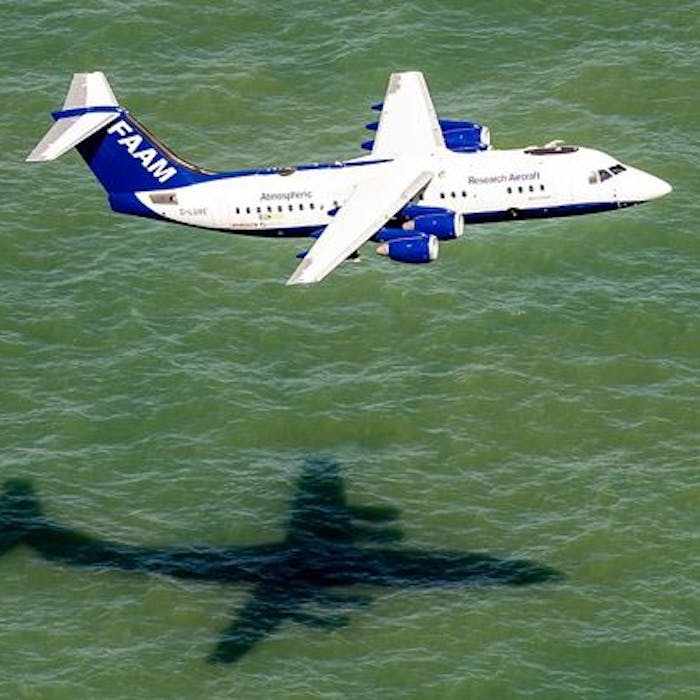
Flying research lab probes the atmosphere
The Facility for Airborne Atmospheric Measurements (FAAM), based at the Cranfield University campus alongside Cranfield Airport in Bedfordshire, conducts pioneering research about weather activities and air conditions with a specially equipped aircraft.
It is the result of a collaboration between the UK Met Office, the Natural Environment Research Council (NERC), and the National Centre for Atmospheric Science (NCAS).
FAAM was established in 2001 to provide aircraft measurement for use by UK atmospheric research organisations and on worldwide campaigns. The main equipment is a modified BAe 146 type 301 aircraft,, owned by BAE Systems and operated for them by the company Directflight Limited.
Work carried out by FAAM includes:
- Radiative transfer studies in clear and cloudy air;
- Tropospheric chemistry measurements;
- Cloud physics and dynamic studies;
- Dynamics of mesoscale weather systems;
- Boundary layer and turbulence studies;
- Remote sensing: verification of ground-based instruments;
- Satellite ground truth: radiometric measurements and winds;
- Satellite instrument test-bed;
FAAM is staffed by a mixture of NERC, University of Leeds and Met Office personnel, and acts as a contractor to numerous UK and occasionally overseas science organisations; primarily the Met Office itself, or UK universities funded by NERC.
It flies around 400 hours annually from a range of base locations in connection with particular projects., although some flying from Cranfield also takes place.
An emergency response role exists, which has been used three times - at the 2005 Buncefield oil depot fire; the 2010 Icelandic Eyjafjallajökull volcanic eruption; and the 2012 Total Elgin gas platform leak.
Following the volcanic incident, a converted smaller Cessna 421 aircraft has been introduced as the "first British responder" to volcanic ash emergencies.
From 2008 - 2014 FAAM was headed by Dr. Guy Gratton, an aeronautical engineer; it is now headed by Alan Woolley, an instrumentation scientist.
Further reading
Links to external websites are not maintained by Bite Sized Britain. They are provided to give users access to additional information. Bite Sized Britain is not responsible for the content of these external websites.
